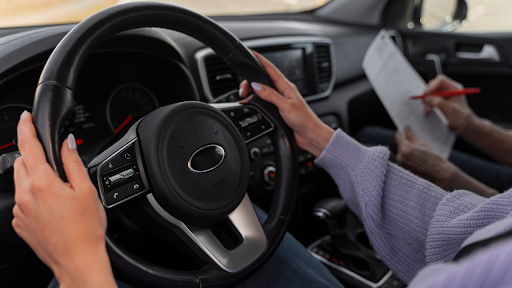Contents
Car driving lessons are fundamental to becoming a competent and safe driver. They offer more than just the ability to operate a vehicle; they instill critical defensive driving skills that can save lives and prevent accidents.
Defensive driving is a proactive approach to driving that emphasizes anticipation, awareness, and preparedness for potential hazards on the road. This blog will explore how car driving lessons help build these essential defensive driving skills through ten detailed points, demonstrating their importance and impact on overall driving competence.
1. Awareness of Surroundings
One of the first skills taught in-car driving lessons is the importance of being aware of your surroundings. This includes constantly scanning the road ahead, checking mirrors, and being mindful of other vehicles, pedestrians, and potential hazards. Instructors emphasize situational awareness, helping drivers anticipate and react promptly to changes in traffic conditions.
2. Understanding Safe Following Distances
Maintaining a safe following distance is a critical component of defensive driving. Car driving lessons teach drivers the “three-second rule,” which ensures enough space between their vehicle and the one in front to react to sudden stops or changes in speed. This practice reduces the risk of rear-end collisions and allows safer driving in various traffic conditions.
3. Recognizing and Reacting to Hazards
Defensive driving involves recognizing potential hazards and knowing how to react appropriately. To teach students how to respond calmly and effectively, driving instructors simulate different scenarios, such as sudden stops, erratic drivers, or obstacles on the road. This training helps drivers develop quick reflexes and sound judgment in emergencies.
4. Proper Use of Mirrors and Blind Spot Checks
Regularly checking mirrors and monitoring blind spots are crucial habits for defensive driving. Car driving lessons stress the importance of using mirrors correctly and performing blind spot checks before changing lanes or merging. These practices prevent accidents caused by unseen vehicles and ensure safer lane transitions.
5. Speed Management
Driving at appropriate speeds for different conditions is another vital aspect of defensive driving. Lessons highlight the importance of adhering to speed limits and adjusting speed according to weather, traffic, and road conditions. Managing speed effectively reduces the likelihood of losing vehicle control and provides more time to react to unexpected events.
6. Effective Communication with Other Drivers
Defensive driving includes effectively communicating intentions to other road users. Driving lessons teach the proper use of turn signals, horns, and headlights to signal changes in direction, warn of hazards, or communicate with other drivers. Clear communication helps prevent misunderstandings and reduces the risk of collisions.
7. Maintaining Focus and Avoiding Distractions
Distracted driving is a leading cause of accidents. Car driving lessons emphasize the importance of focusing on the road and avoiding distractions such as mobile phones, eating, or adjusting controls. Instructors provide strategies for minimizing distractions, ensuring drivers remain attentive and aware while driving.
8. Anticipating the Actions of Others
Anticipating the actions of other drivers and road users is a critical defensive driving skill. Lessons teach drivers to watch for signs that indicate what other drivers might do next, such as turn signals, brake lights, and speed changes. Drivers can avoid conflicts and accidents by predicting and preparing for these actions.
9. Adapting to Weather and Road Conditions
Adverse weather and varying road conditions require special attention and adjustments in driving behavior—car driving lessons cover techniques for handling rain, snow, fog, and icy roads. Instructors teach students how to adjust their speed, increase following distances, and use vehicle controls effectively to maintain safety in challenging conditions.
10. Building Confidence through Practice
Confidence is essential for defensive driving. Driving lessons provide a controlled environment where new drivers can gradually practice and build their skills. Instructors offer constructive feedback and guidance, helping students gain confidence in handling different driving situations. This confidence translates to better decision-making and safer driving on the road.
Conclusion
Car driving lessons are invaluable for developing defensive driving skills that ensure long-term safety on the road. By focusing on awareness, safe following distances, hazard recognition, proper use of mirrors, speed management, effective communication, maintaining focus, anticipating others’ actions, adapting to conditions, and building confidence, these lessons prepare drivers to handle various challenges.
Defensive driving is not just about protecting oneself but also about contributing to the overall safety of the driving community. As drivers hone these skills through professional instruction, they become more responsible and conscientious, making the roads safer for everyone. Embracing defensive driving principles learned in-car driving lessons is crucial to becoming a skilled and safe driver.




